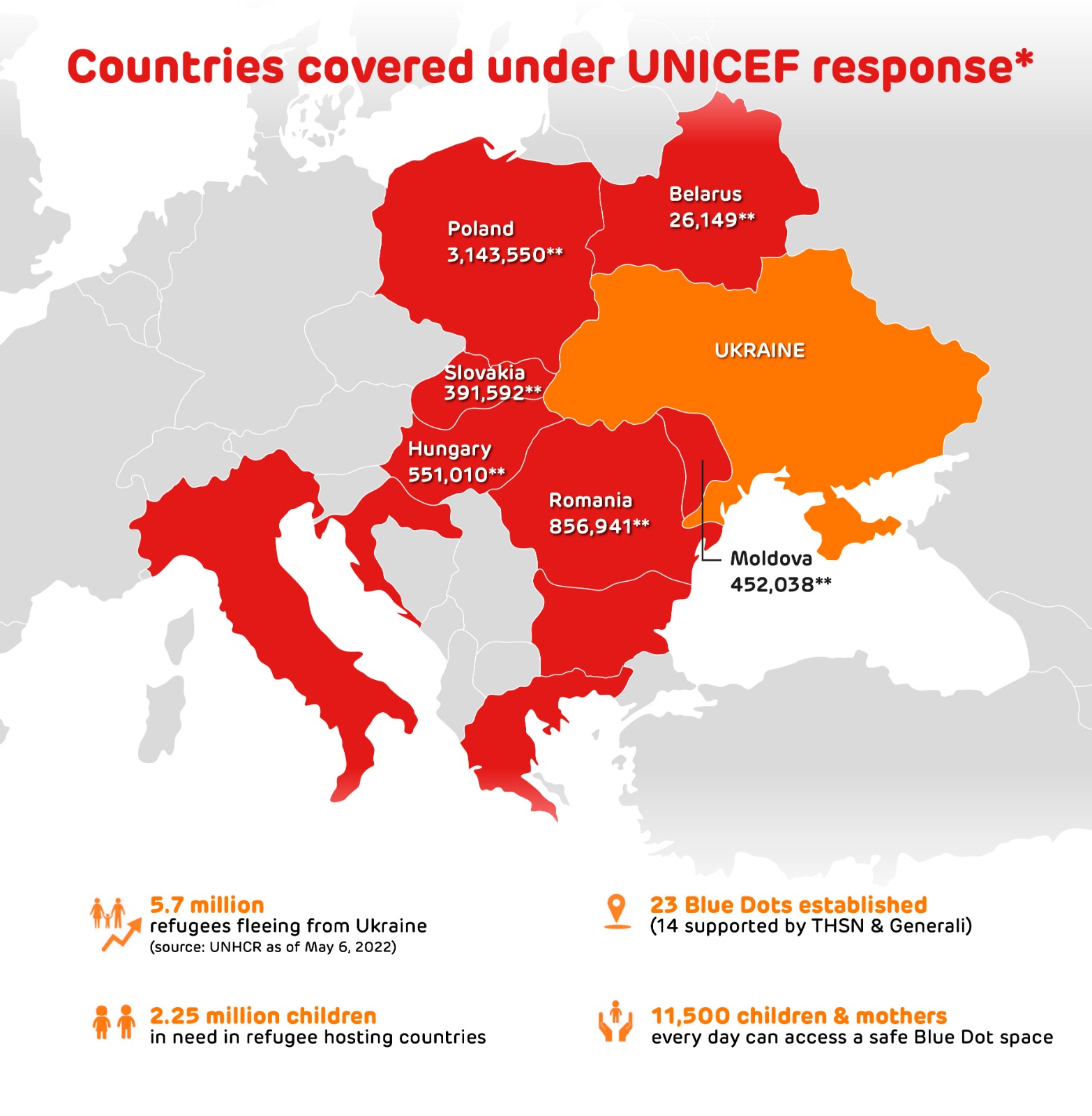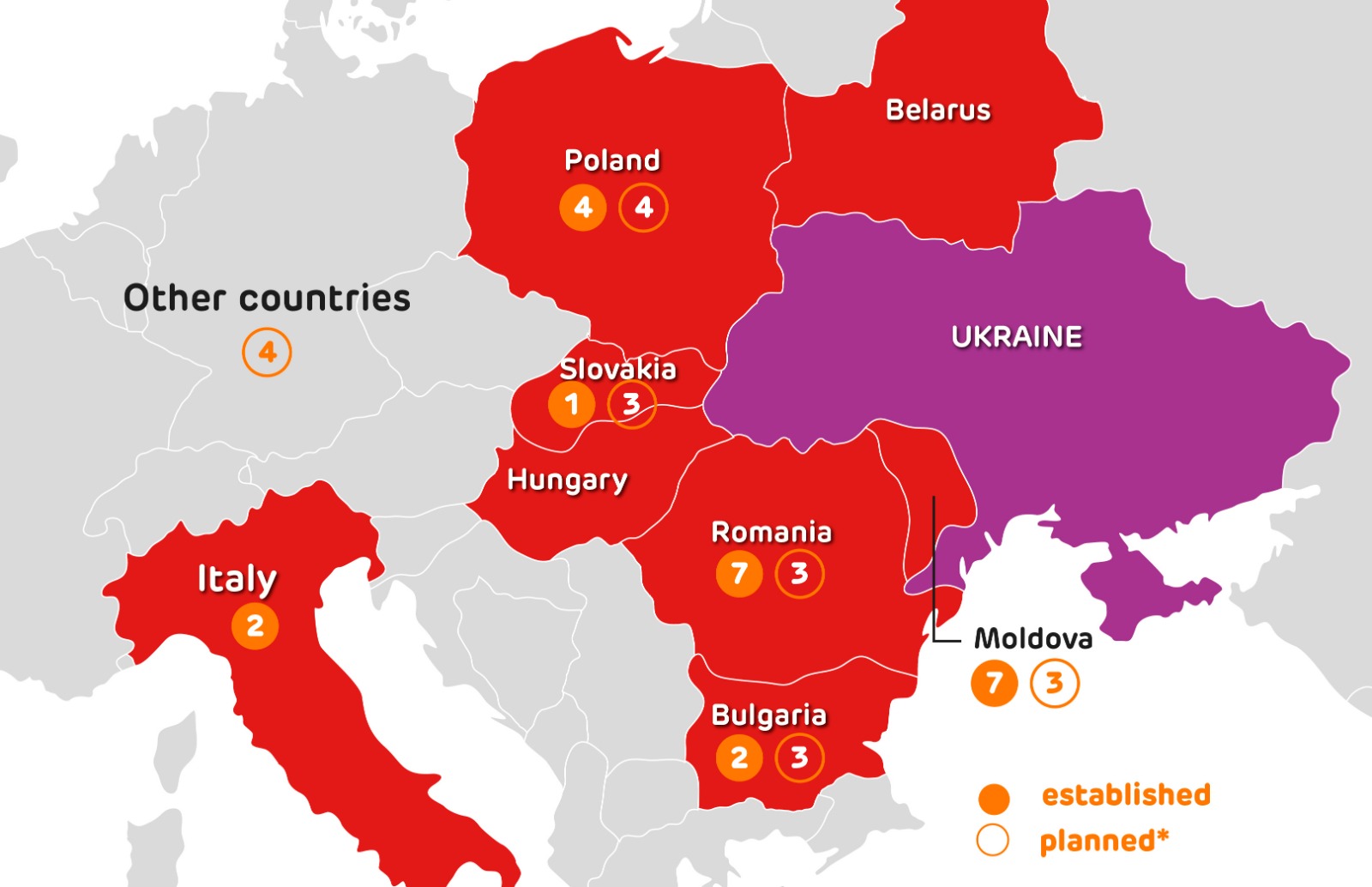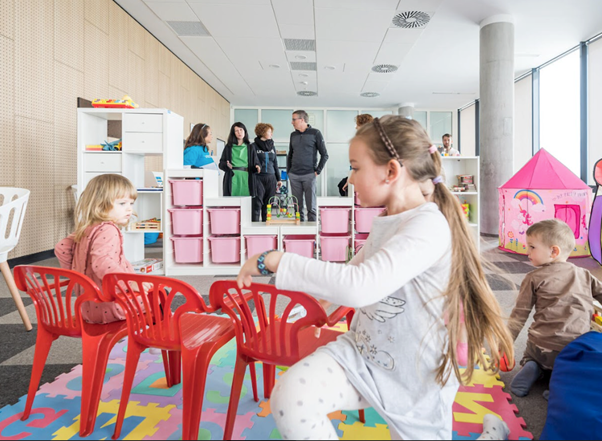One of the most visible ways that we are supporting Ukrainian refugees is the network of Blue Dots, established jointly with UNICEF and UNHCR, that create safe spaces for thousands of children and families every day.
The war in Ukraine has entered its third month and continues to exacerbate a massive humanitarian crisis, in particular causing a huge wave of refugees fleeing the conflict.
More than 5.7 million refugees have fled Ukraine (source: UNHCR as of May 6, 2022) and, of these 2.25 million are children in need of hosting countries.
The Blue Dots are welcoming spaces providing support and protection for children and families.
They are located along major escape routes and at refugee registration sites or reception facilities.
They offer children a safe and welcoming space to rest, play or just to be a child.
Twenty-three Blue Dots have been established (with 14 of these supported by THSN & Generali), providing more than 11,500 children and their mothers with access to a safe space every day.





